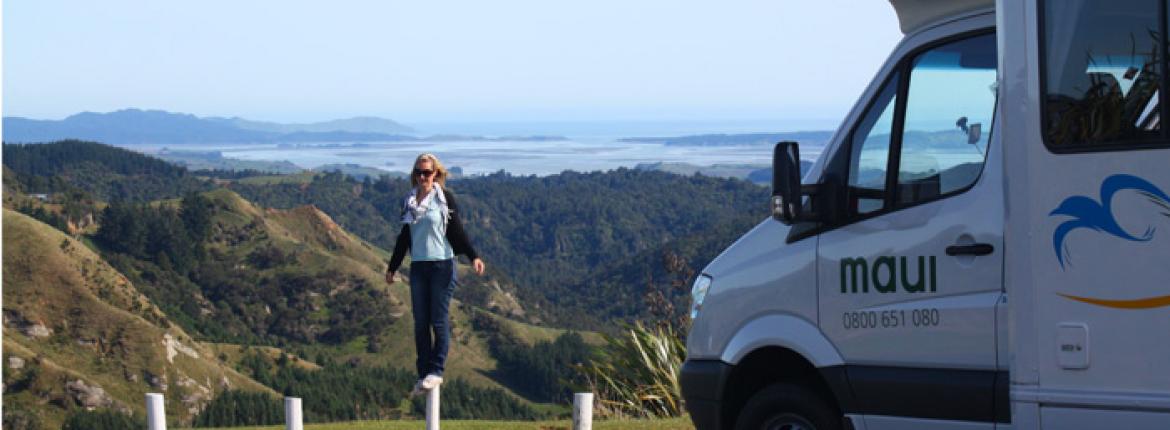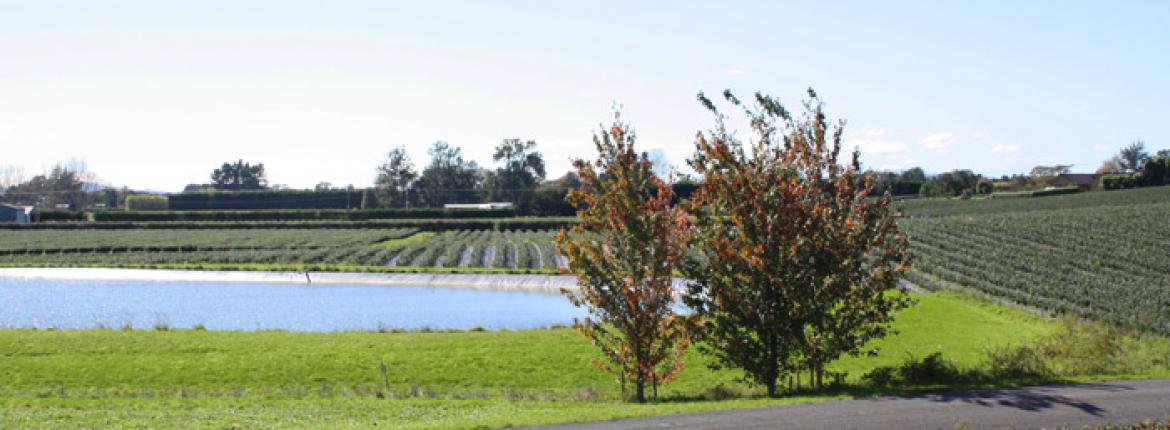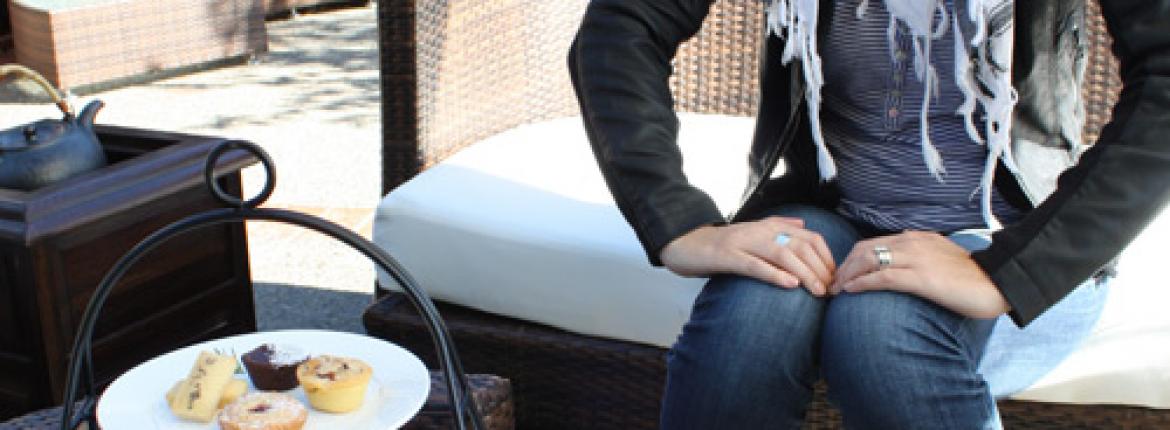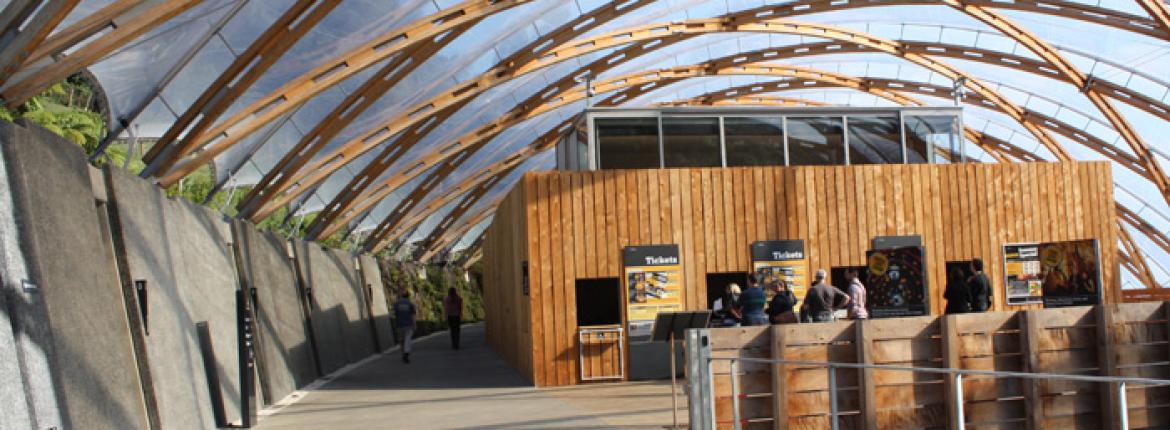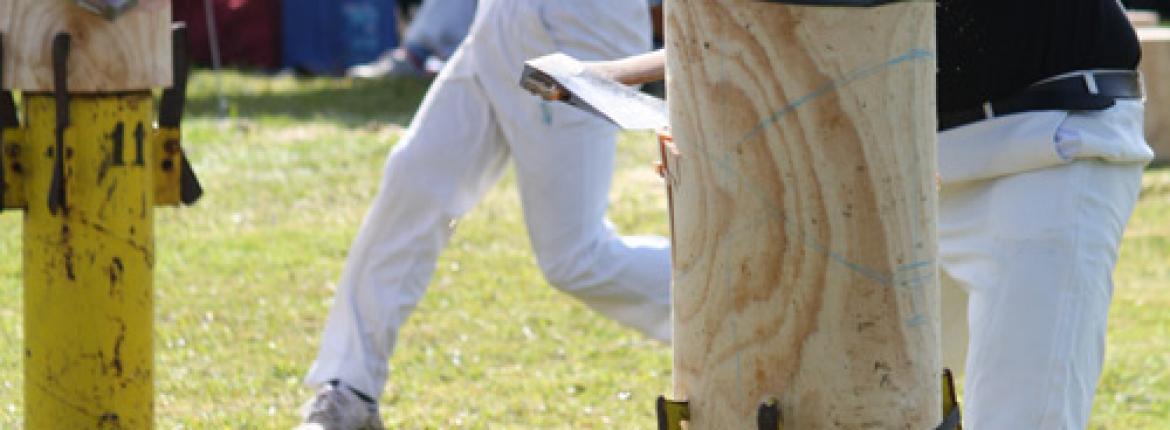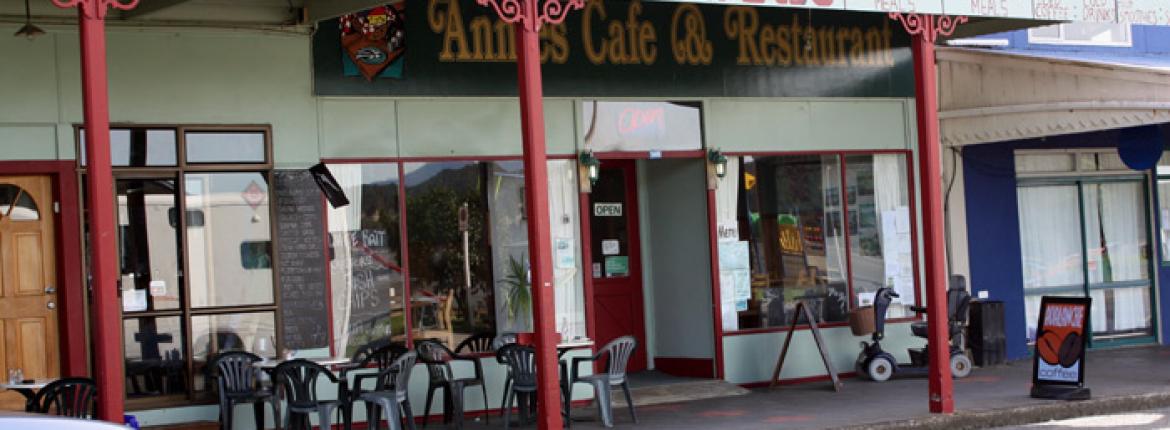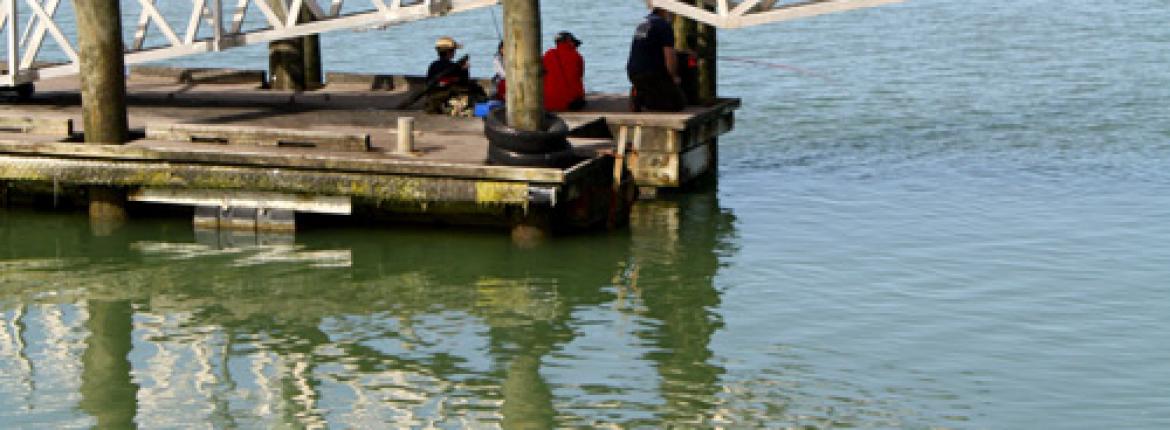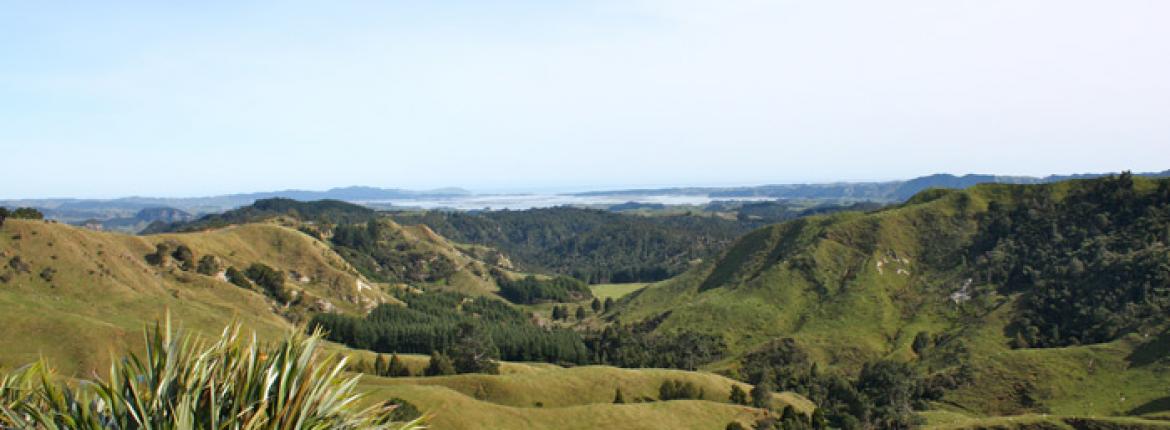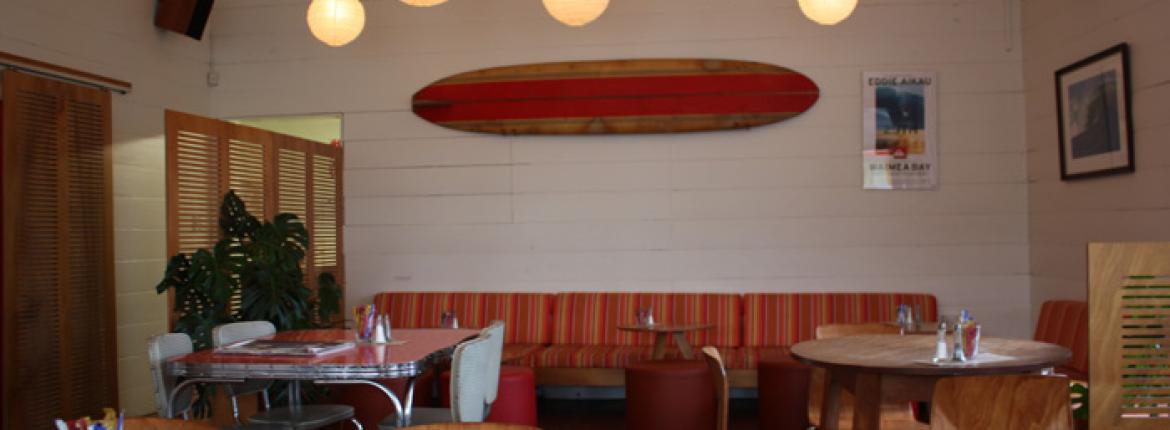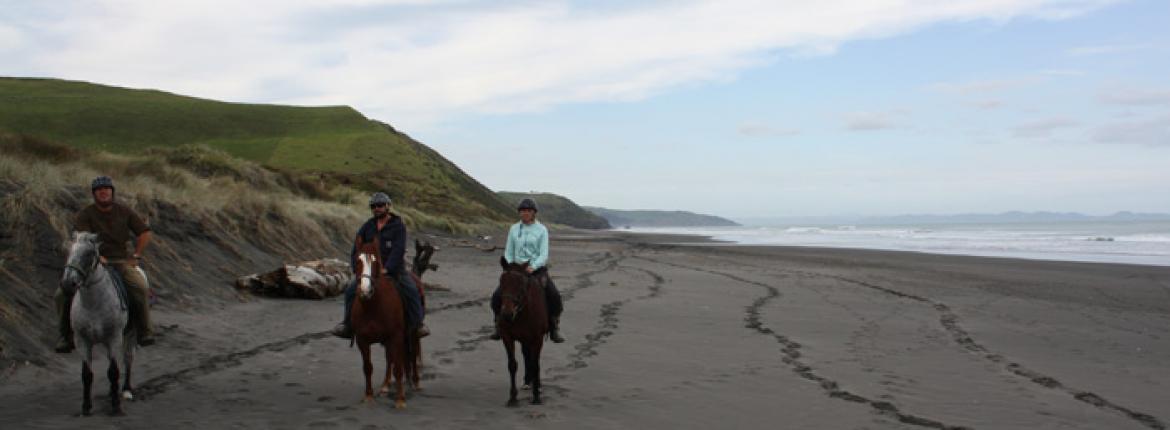We’re escaping for a weekend road trip in an enormous campervan. Suburbia quickly gives way to velvety farmland, a backdrop of crisp blue sky and the thick river wallowing vast and relentless alongside us.
Our first stop is a little-known Waikato attraction: a tea plantation. Zealong Estate, just north of Hamilton, opened in December 2009. It is the only tea plantation in New Zealand, and the only commercial oolong plantation outside of Asia. From the unassuming entrance of the residential farmhouse, we walk through the Camellia teahouse, and out onto the broad sunny deck to observe the long rows of dark green oolong bushes stretching into the distance.
Tea is actually a type of camellia, says our host, Fabien, which makes the consistently cool, damp conditions of the Waikato ideal. “Tea loves fog,” he says. The only downside to growing in the Waikato is the winter frosts, which can wreak havoc on the crops. Fabien explains that if frost is forecast, they have helicopters on standby to fly overhead and blow warm air onto the plantation – a costly operation considering helicopters run at a cool $2,000 per hour.
Fabien takes us through a traditional Chinese tea ceremony to sample the three varieties that Zealong produces. We watch, engrossed, as he meticulously weighs out portions of tea and prepares each sample. Oolong tea can withstand six to eight infusions per spoonful, and the flavours change and develop throughout the process. The leaves are tightly rolled during drying and, as they infuse, they slowly unfurl to resemble the strong leaves we’ve just seen on the bushes outside. The tea has buttery, toffee-like flavours, and is quite sweet – not at all what I expected.
As we drive towards Waitomo, skirting through the edges of Hamilton city, the landscape begins to undulate. We pass riverbeds encrusted with glowing autumnal trees, dense patches of native bush, and cows placidly masticating behind wire fences. The road narrows as we pass miniscule farm cottages, classic corrugated red sheds and groups of plucky roadside turkeys.
Waitomo is a compact village nestled in a bucolic sweep of valley. Tall stands of Totara grow at each end, and the eponymous hotel sits on the overlooking hillside. It is purported to be the most haunted hotel in New Zealand, and it has a distinctly eerie feel.  Down the road, the Waitomo Caves Visitor Centre has recently undergone a major revamp. The translucent bubble roof is a commanding presence, hovering over the entranceway on a lattice of curved wood. The caves themselves are equally commanding. We take a succinct glow- worm tour through the quiet, majestic space, with soaring cathedral-like ceilings and extraordinary geological features.
Down the road, the Waitomo Caves Visitor Centre has recently undergone a major revamp. The translucent bubble roof is a commanding presence, hovering over the entranceway on a lattice of curved wood. The caves themselves are equally commanding. We take a succinct glow- worm tour through the quiet, majestic space, with soaring cathedral-like ceilings and extraordinary geological features.
The tour finishes with a boat ride out through the bowels of the cave. Our group collectively draws breath as the lights go out and we glide silently through glow-worm twilight. Drops of water plook from the cave roof and the river sloshes around the metal hull as our guide, Huia, quietly pulls the vessel through the darkness. I find myself flinching inwards as stalactites loom towards us – blacker even than the surrounding black.
The Huhu Café, perched on the hill next to our Top 10 campground provides a snug respite from the chilly evening. Fortified with delicious New Zealand wine and hearty fare, we watch the stars pop as the apricot dusk turns to turquoise, then ink.
Early on a gleaming Saturday morning, a group of young men compete in the under-21 wood-chopping trials in the domain. Clad in white trousers, grasping shiny axes, they mill around good-naturedly before beginning the serious task of marking and measuring their logs. The start is counted in over a crackling loud speaker, “Choppers, are you ready?” and they’re off – chips flying, muscles flexing, blades glinting in the sunshine. Their grunts and blows reverberate around the dewy village basin. Fathers, grandfathers and families watch from nearby deck chairs nursing steaming cups of tea.
Soon we’re on the road again, taking the winding trip up to Kawhia. The tiny settlement is still and sleepy on a tranquil weekend.
A handful of families enjoy fish and chips and milkshakes at the edge of the tidal harbour, while others fish from the historic wharf. A toddler and her mother wade in the shallows waving to seagulls. “Ka kite manu!” she calls happily.
We grab lunch at Annie’s Café – a quaint and cosy cornucopia of mismatched furniture, assorted knick-knacks, netball trophies and rugby league posters. We get a table next to the log burner and ubiquitous ginger cat for a feast of whitebait fritters and fresh oysters.
The lumbering behemoth that is our six-berth campervan shudders over the wide gravel road to Raglan in a cacophony of clattering crockery. Wire fences run like fresh sutures through the hilly paddocks, and glossy roosters strut along the roadside. In contrast to the grid of paddocks further inland, the landscape here is all curving coastal inlets and serpentine roads.
Arriving in Raglan after our teeth-rattling trip, we sup a fortifying beverage on the verandah of the Harbour View Hotel in the centre of town. We watch guests congregate for a wedding and everyone stops and smiles as the bridal party trawls the main street in a lowered VW Kombi adorned with fluttering white ribbons.  Sunday morning is quiet and grey. We breakfast at The Shack, a colourful café in the centre of Raglan, and venue for the previous night’s wedding. Locals casually flout the decree that dogs are strictly prohibited on the main footpaths and a friendly wandering mutt gives us a quick lick, as we sit outside with our eggs Benedict.
Sunday morning is quiet and grey. We breakfast at The Shack, a colourful café in the centre of Raglan, and venue for the previous night’s wedding. Locals casually flout the decree that dogs are strictly prohibited on the main footpaths and a friendly wandering mutt gives us a quick lick, as we sit outside with our eggs Benedict.
Afterwards, we back-track to Ruapuke via a frighteningly narrow unsealed road. In the wild isolated landscape, the steep hillside paddocks stretch down to the surf beach at the coast. We negotiate a gravel driveway, me clinging nervously to the passenger seat.
Penny and Wayne of Wild Coast Ruapuke horse treks are awaiting our arrival – surrounded by a cheerful welcoming committee of free-range kids, dogs and horses.
We mount up for our journey down to the empty black sand beach. I am paired with Henry, a muscular mottled horse who is quite literally chomping at the bit and, as soon as we hit the soft iron sand, he is off. We belt down the beach, rapidly pulling away from the rest of the group. I breathlessly grab a handful of his mane, as he vaults over a shallow stream. As the others catch up, Bud, our guide, jokes that the reason he wears sunglasses on the beach is because he is used to Henry kicking sand in his face.
Bruised, aching and exhilarated, we reluctantly clamber into the campervan for the trip back to Auckland
Photography by Ben Percival
Reported by Jo Percival for our AA Directions Winter 2011 issue

